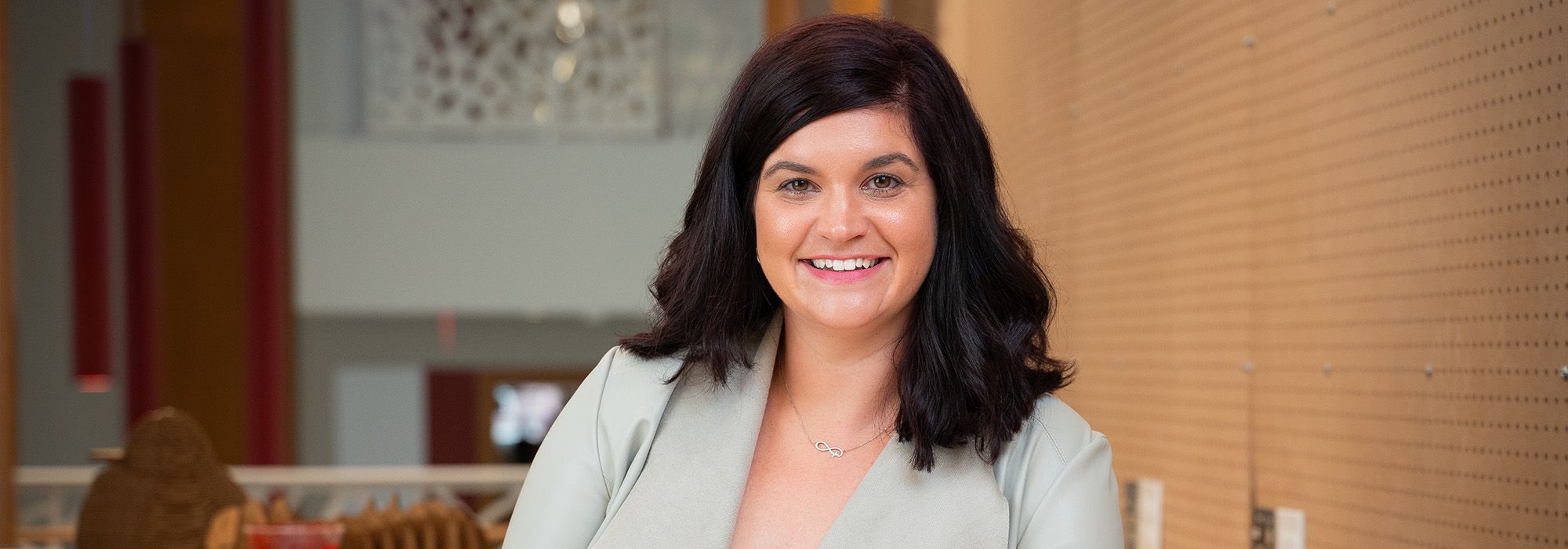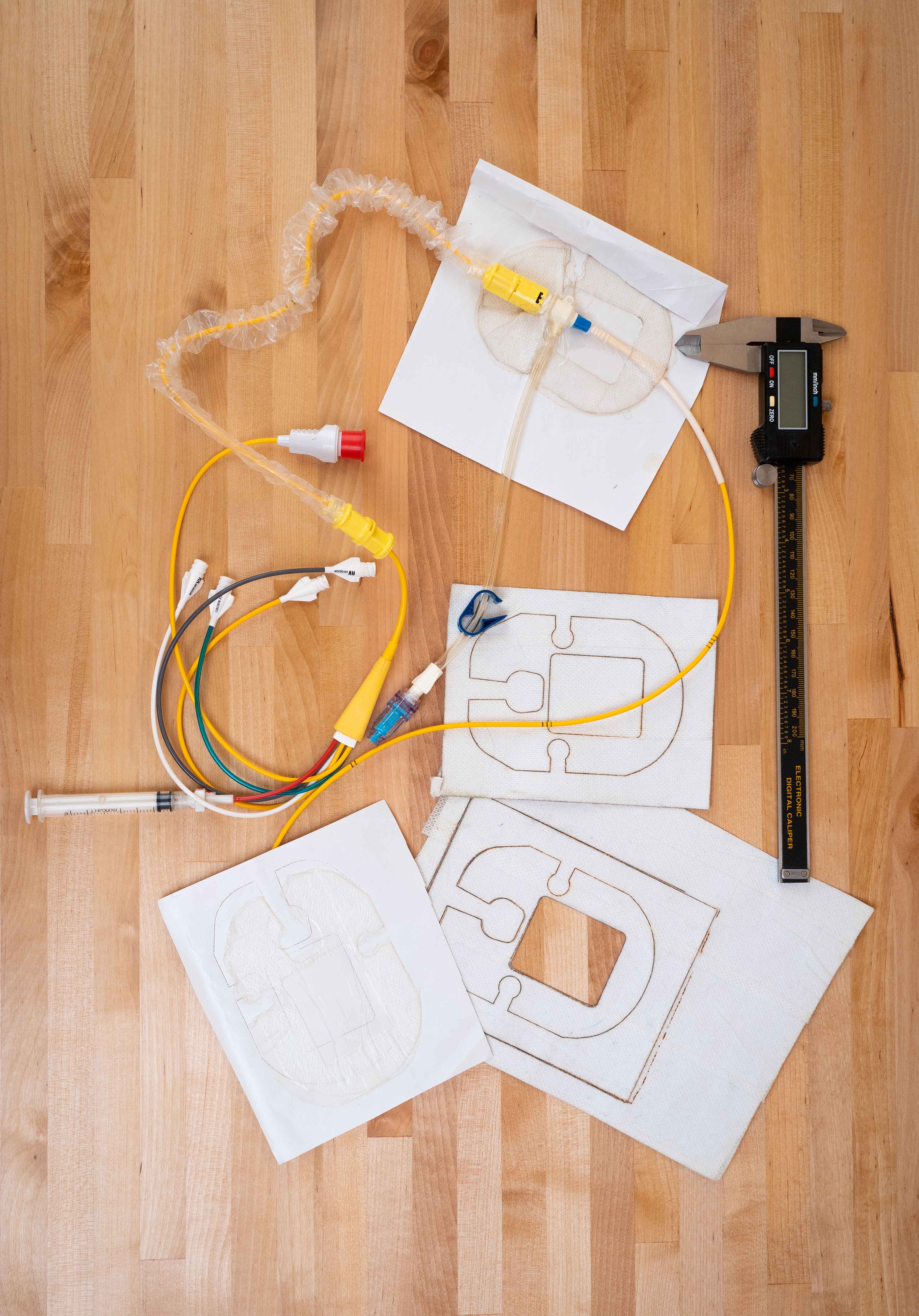
Sam Warren Innovates
by Susan Neale
Alumna Samantha “Sam” Warren, RN, PCCN, (‘19) is a cardiac critical care nurse at The Ohio State University Wexner Medical Center Richard M. Ross Heart Hospital. The staff at the cardiac ICU noticed a concerning issue: an increase of the kind of infections known as CLABSIs (central-line acquired bloodstream infections) in patients with pulmonary catheters. Over the years, the number of CLABSIs had grown for these patients, but why? And how could they stop them?
Watch an interview with Sam Warren at the new Connie Hahn Sharpe and Gary Sharpe Innovation Center in Jane E. Heminger Hall:
A clue: time increase
Intensive chart reviews revealed that patients with pulmonary catheters were using them for a much longer time, compared to when the original design was put into use in the late 70s to early 80s. “Medical science has advanced,” Sam explained, “and we are able to provide incredible amounts of care that weren’t previously possible.” As a result, cardiac patients now stay in the hospital longer to receive more treatments. The sterile dressings used with central lines weren’t designed to hold up that long.
“Nursing is brilliant at workarounds,” Sam said. While the nurses she worked with and nurses at other hospitals improvised ways to make what they had work, they wanted to find a permanent solution, and nothing was available in any of the supply catalogs Sam studied.
Then Sam saw an ad for the College of Nursing’s Innovation Studio and decided to solve the problem herself.
Innovating a solution

Sam and her physician colleague, Jordan Thomas, MD, went to the Innovation Studio and presented their ideas. As invention partners, she and Jordan came from different perspectives, but “the Innovation Studio helped us put those ideas together,” she said.
“We knew what we wanted, but we didn’t know how to make it,” Sam said. With the Innovation Studio manager, they drew designs, made prototypes, and eventually approached Ohio State’s Technology Commercialization Office (TCO), who helped guide them through the patent process.
While the COVID-19 pandemic slowed the process, the T2019-170 – antimicrobial dressing designed exclusively for insertion sheaths with side ports is close to reality. TCO is helping Sam and Jordan find a medical company to buy their patent rights and distribute worldwide. Sam hopes that in five years it will be available in ICUs everywhere to eliminate CLABSIs.
“It’s amazing to see your ideas come to life at the Innovation Studio,” Sam said. “To leave the Innovation with a real prototype is incredible, and it’s so empowering as a nurse.”
Innovating her way to nursing
Nursing is a second career for Sam, spurred by something her mother told her when they were taking turns taking care of her grandmother, who needed cancer care.
“A lot of things you are doing I don’t think everyone can do,” her mother said. “I think you should be a nurse.”
Sam thought so, too. She went back for a nursing degree and was one of the first students to make use of Columbus State and Ohio State’s bridge program, now known as Path2BSN. Sam was born with a congenital heart problem that was corrected by surgery when she was in eighth grade, so she knew she wanted to go into cardiac care. Now an alumna of the College of Nursing, she continues to work in the cardiac ICU (known as “2 Ross”), is chair of the Evidence-based Practice and Innovation Research Council at Ohio State, mom to eight-year-old Carson, and just married in March to Tim Sprague. And thanks to the Innovation Studio, she is also an inventor whose innovation may save many patients from CLABSIs.
In this issue
- All in It for the Same Goal: PhDs and DNPs Collaborate
- Celebrating Margaret Graham
- Bringing XR to the Classroom
- Jane E. Heminger Hall Opens
- Impact of Giving
- Well-being Begins with Us
- Rita Pickler: Asking the Right Questions
- New Designation Recognizes EBP Excellence
- Experience Nursing Overseas
- Sam Warren Innovates
- Da'na Langford and the Village of Healing
- Meet OSU Spidey
